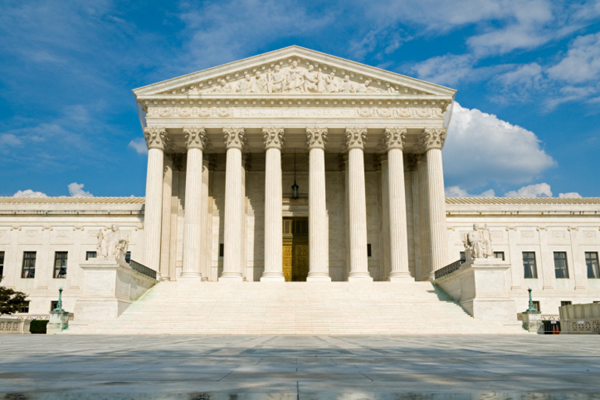3Qs: Gay marriage, voting rights, and the evolution of equality

The Supreme Court issued three major civil rights-related rulings this week. The court dramatically altered the Voting Rights Act; set in place new considerations that could end affirmative action at public colleges and universities; declared unconstitutional the federal Defense of Marriage Act; and paved the way for California again to recognize same-sex marriages. We asked Wendy Parmet and Martha Davis, law professors and Supreme Court scholars, to explain the significance of the cases and what they mean for the nation going forward.
How does the court’s ruling in U.S. v. Windsor, which declared the Defense of Marriage Act unconstitutional, reflect changes in the Supreme Court?
Wendy Parmet, the George J. and Kathleen Waters Matthews Distinguished University Professor of Law: This ruling reflects broad changes in society that are clearly resonating with the court, which has come very far since Bowers v. Hardwick, the 1986 ruling that upheld the constitutionality of a sodomy ban in Georgia.
But it’s hard to look at the Windsor decision in a way that’s totally divorced from the ruling earlier this week in Shelby County v. Holder, which is the Voting Rights Act case. That decision declared much of the Voting Rights Act unconstitutional and really shows a remarkable shift in the court’s understanding of the Equal Protection Clause. We’re now seeing a very ahistorical understanding of the Equal Protection Clause, one that is less focused on protecting traditionally discriminated-against groups like African-Americans and more influenced by state’s rights. Though this case was decided on Equal Protection grounds, the court is clearly concerned that DOMA seemed to step on the historical rights of the state. The court now appears to be more focused on protecting a state’s right to define marriage and establish its own voting laws than the rights of vulnerable segments of our society.
This interpretation of the Equal Protection Clause makes me feel we’re moving even more toward a polarized Red America versus Blue America dynamic, where rights that exist in some states don’t exist in others. And while the Windsor ruling should immediately open the door to all of these federal benefits that were previously denied to legally-married same-sex couples, it doesn’t answer the question of what happens if they move to a state that doesn’t recognize or has banned gay marriage.
Some gay marriage proponents were hoping the Supreme Court would recognize a constitutional right to gay marriage. Did that happen with the ruling on Proposition 8 in Hollingsworth v. Perry?
Wendy Parmet: This ruling was a procedural punt, decided on jurisdictional grounds. The litigants seeking to uphold Proposition 8, the court ruled, simply didn’t have legal grounds to bring their suit in the first place.
What the ruling means for people in California is that same-sex marriage is now effectively legal. What it means for people outside California, in a state that does not recognize gay marriage, is that there is continued uncertainty about this issue.
This ruling may have an impact on future standing laws, but it won’t be of much interest to non-specialists. This is going to be a case that proceduralists read in law school, but it’s not a case about whether there is a constitutional right to same-sex marriage. That case will be decided one of these days, but that day hasn’t come yet.
The Supreme Court’s ruling in Fisher v. University of Texas at Austin, says that courts must take a more critical look at the affirmative action policies in place at public colleges and universities. What does this ruling, which avoided a direct statement on the constitutionality of the program, tell us about the court’s evolving views on race?
Martha Davis, Professor of Law: This ruling maintains the status quo. The existing precedent, 2003’s Grutter v. Bollinger, upheld the affirmative action policy of the University of Michigan Law School; that remains the law of the land, permitting the use of race in a holistic review of an applicant. Essentially, race cannot be the only factor in considering an applicant, but it can be one of many factors that are considered in admissions.
After Brown v. Board of Education in 1954, there was a period of two decades in which courts were very involved in school systems, monitoring desegregation and ensuring it was being appropriately carried out. There has been a lot of backlash against this so-called “judicial activism” by the current Court’s conservative members. One question is whether the Fisher ruling is now starting down that same road by cutting back on the deference to college admissions’ decisions while increasing judicial involvement and activism. This ruling may be seen as inviting courts to get very involved in second-guessing higher education admissions and possibly other educational decisions.





